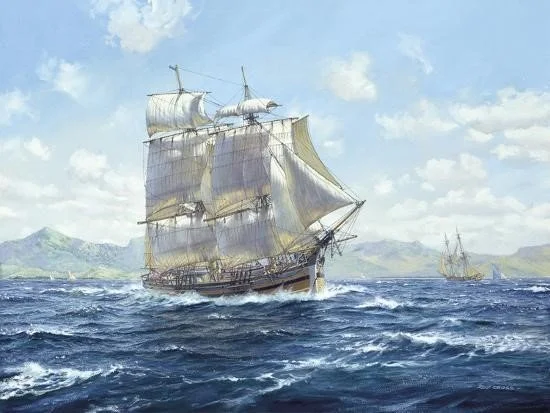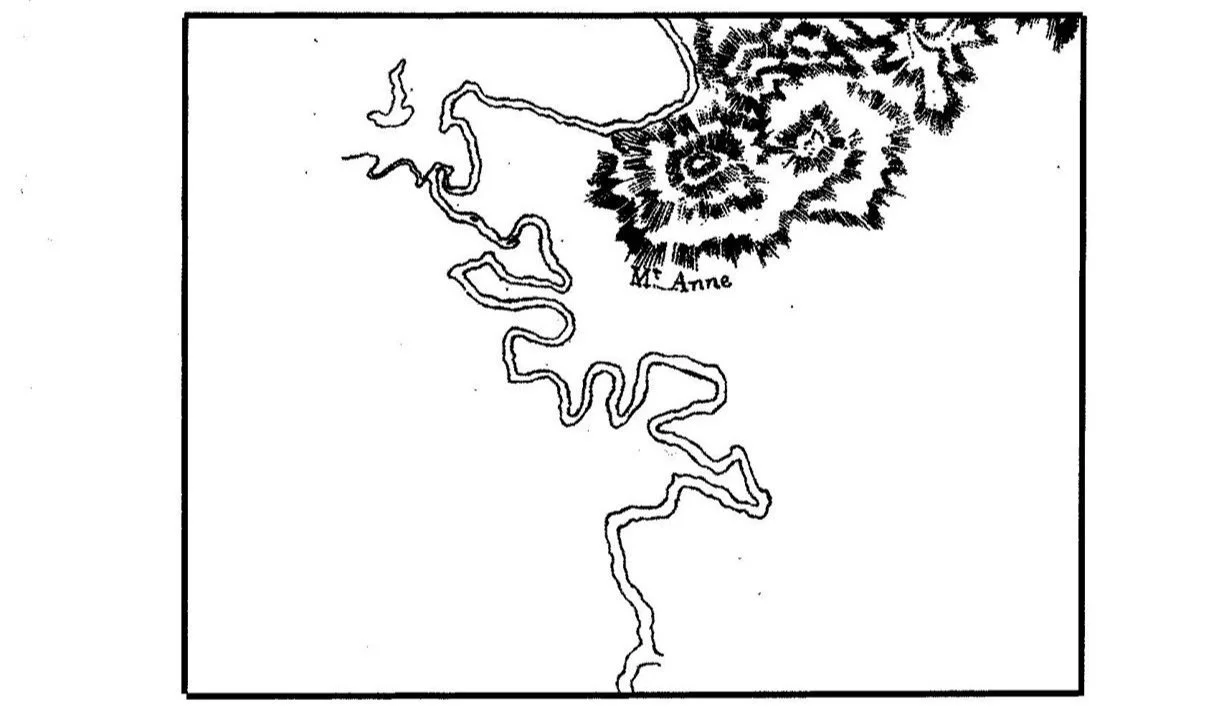A trip to Coal River in 1801
In June 1801 Governor Philip Gidley King ordered Colonel William Paterson to survey Coal Harbour, Coal River (now the Hunter) and areas nearby. The survey party travelled in two ships: the Lady Nelson and the Francis.
The ships
At the end of the 1790s the New South Wales colonial government owned no sea-going vessels save the schooner Francis. The only other ocean-going vessels voyaging from Sydney were privately owned.
Lady Nelson
In 1799 the Admiralty's Commissioners of Transport ordered a cutter of 60 tons to be built for their own use in the River Thames. They called it Lady Nelson. The ship’s design followed that of the armed cutter Trial, built in Plymouth in 1789 to a design developed by Captain (later Admiral) John Schanck. Trial was unusual in that it had three sliding keels, or centre-boards that the crew could raise or lower individually.
Lady Nelson
(Wikipedia)
Lady Nelson was built by John Dudman at Deadman's Dock, Grove Street, Deptford. It was commissioned ‘for the purpose of prosecuting the discovery and survey of the unknown parts of the coast of New Holland, and ascertaining, as far as is practicable, the hydrography of that part of the globe’.
Lady Nelson, on the suggestion of its first commander Lieutenant James Grant, and with Schanck’s permission, was rigged as a brig. The ability to raise keels was a useful feature for a survey vessel required to work in shallow waters. On leaving England and fully provisioned, the ship’s draught was 12 feet. This would be halved to six feet when the keels, of timber construction, were raised.
The Lady Nelson had the honour of being the first ship to sail to Sydney through Bass Strait rather than around Tasmania’s southern tip. It arrived at Sydney on 16 December 1800, after 71 days at sea since leaving the Cape of Good Hope.
Francis
The Francis was a 41-ton schooner partially constructed at the Deptford Dockyard, England. It was sent in frame aboard the Pitt to Australia where it was put together for the purposes of exploration.
Francis is generally regarded as the first ship built in Australia. For some years it was the only government vessel available to the Governor. Although it arrived in frame in February 1792, assembly was not completed until 17 months later. The ship was launched at Sydney Cove on 24 July, 1793 and was to have a varied career.
Its first major voyage was with Brittania, to Dusky Bay, New Zealand, on a survey and sealing expedition. The following year it made a survey of Port Stephens under the command of Deputy Surveyor General Charles Grimes. The ship also sailed regularly between Sydney and the settlement on Norfolk Island between 1794 and 1804 as the only government vessel available for the run unless a convict transport or supply ship happened to be in Port Jackson.
The survey trip
With the Lady Nelson under Grant’s command and accompanied by the Francis, Colonel William Paterson travelled north in June 1801 to survey Coal Harbour, the river and areas nearby. This river (now the Hunter) had not been known to the authorities until John Shortland (the first government official to enter its mouth) arrived in 1797 on board HMS Reliance.
Paterson’s group included, among others, the very competent French-born surveyor Francis Barrallier who completed accurate though incomplete charts of the harbour, the river and their surrounds up to and including the site of today’s Maitland. Barrallier returned later in the year to complete his survey.
Barrallier’s survey map (part)
For the full survey see ‘Barrallier’s surveys of the Hunter Region (1801-1802)’, Hunter Living Histories, 15 July 2016.
The Francis returned to Sydney with 150 tons of coal taken from near the river’s mouth. The coal was in turn loaded onto the Earl Cornwallis which took it to India. This is believed to have been the first export of coal from the area that became Newcastle.
The survey party gave the general area in which Maitland was to take root its first European name. They called it Schanck’s Forest Plains, in honour of the Lady Nelson’s designer, John Schanck. In 1818 Governor Lachlan Macquarie renamed it Wallis Plains, after the commandant of the penal colony at Newcastle, Captain James Wallis. This name too was superseded in 1835 when Maitland was renamed East Maitland and Wallis Plains became West Maitland.
Schanck is remembered today by a drive in Metford and Barrallier by a small lane adjacent to Maitland Park and an avenue at Woodberry (although both are incorrectly spelt ‘Barralier’). Paterson is commemorated by a town and a river; Wallis by a street in East Maitland and a waterway that separates and forms the boundary between East Maitland and the area once known as West Maitland.
References
‘HMS Lady Nelson (1798)’, Wikipedia.
‘Francis (1793)’, Wikipedia.
Short, Kevin, ’Our past: Lady Nelson’s journey of discovery up the Hunter,’ Maitland Mercury, 9 March 2020.
Walsh, Brian, Woodville Uncovered, Paterson Historical Society, 2021.


